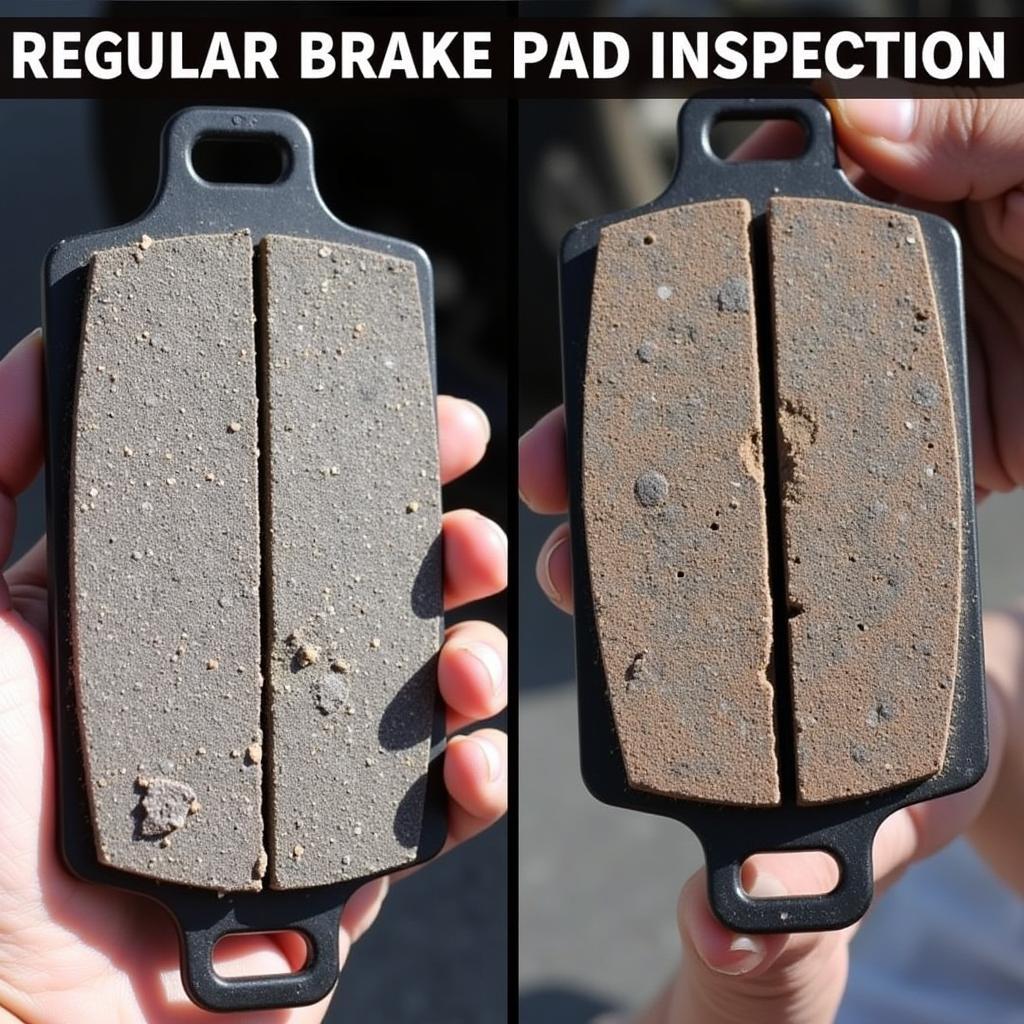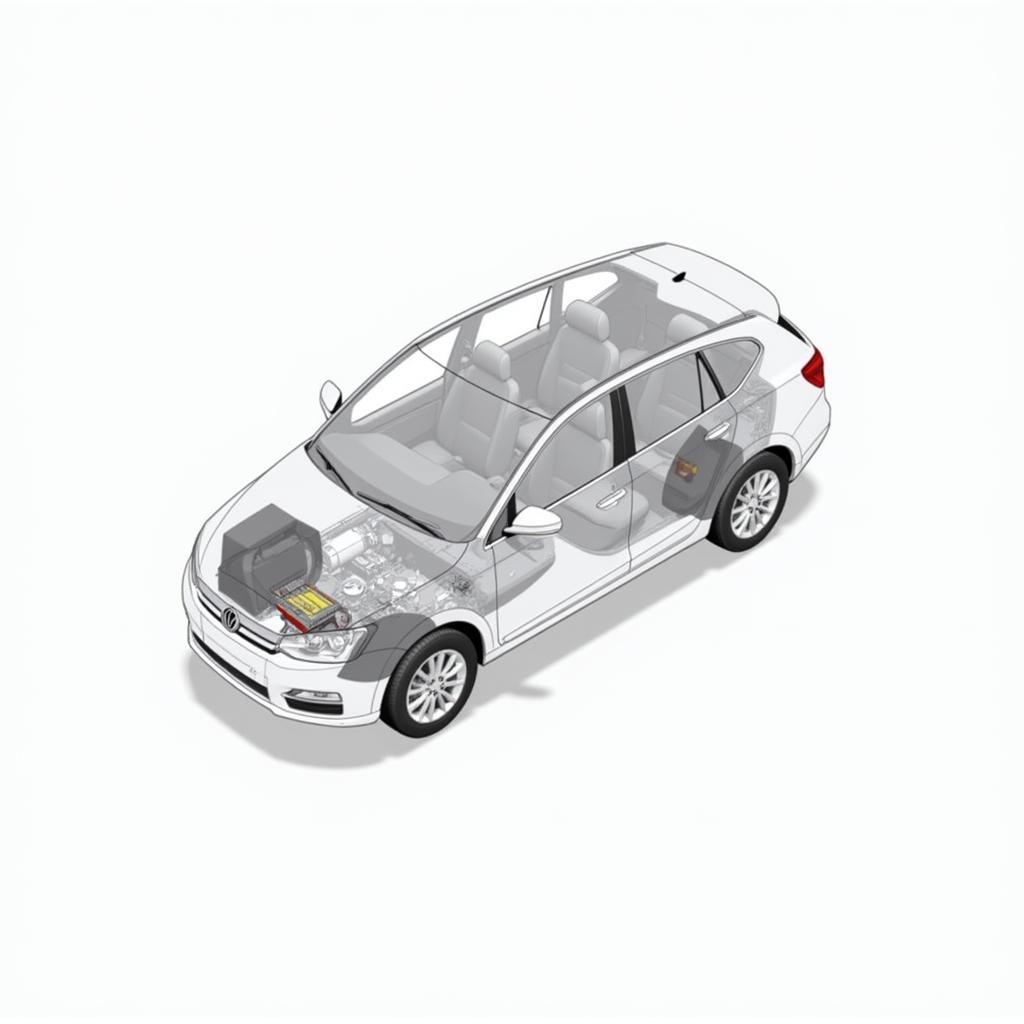The dreaded “Service Brake System” warning light on your dashboard. It can be a heart-stopping moment, especially if you’re unfamiliar with what it signifies. Rest assured, this warning doesn’t always mean a complete brake failure is imminent. However, it does warrant your immediate attention as it indicates a potential problem with your vehicle’s braking system that shouldn’t be ignored.
This comprehensive guide is designed to demystify the service brake system warning, providing you with valuable insights and practical solutions to address the underlying issues.
Understanding Your Vehicle’s Braking System
Before we delve into the specifics of the warning light, it’s helpful to understand the basics of how your vehicle’s braking system operates. A typical braking system comprises several components working together to ensure safe deceleration and stopping:
- Brake Pedal: This is where it all begins. Pressing the pedal initiates the braking process.
- Brake Booster: This component amplifies the force you apply to the brake pedal, making braking easier.
- Master Cylinder: This crucial component converts the mechanical force from the brake pedal into hydraulic pressure.
- Brake Lines: These lines carry the pressurized brake fluid to the wheels.
- Brake Calipers and Wheel Cylinders: These components house the brake pads and shoes, which are pushed against the brake rotors or drums to generate the friction needed to slow down or stop the vehicle.
Common Causes of the Service Brake System Warning
The service brake system warning light can illuminate due to a range of reasons, some more serious than others. Here’s a breakdown of the most common culprits:
1. Low Brake Fluid Level
This is perhaps the most frequent cause of the warning light appearing. Brake fluid is the lifeblood of your braking system, transmitting the hydraulic pressure that enables your brakes to function. If the brake fluid level drops too low, typically due to a leak, it can trigger the warning light.
Troubleshooting Tip: Check your brake fluid reservoir level. It’s usually located under the hood and has a clearly marked minimum and maximum level. If the fluid is low, it’s crucial to address the leak before refilling.
2. Worn Brake Pads
Brake pads are designed to wear down over time as they generate friction against the brake rotors. When they wear thin, their ability to create the necessary friction to stop the vehicle effectively is compromised.
Troubleshooting Tip: Many modern vehicles have wear indicators on the brake pads that emit a high-pitched squealing sound when the pads are nearing the end of their lifespan. If you hear this telltale sign or notice a decrease in braking performance, have your brake pads inspected and replaced if necessary.
 Worn Brake Pads
Worn Brake Pads
3. Faulty ABS System
The Anti-lock Braking System (ABS) plays a critical role in preventing wheel lockup during hard braking, enhancing vehicle control. A malfunctioning ABS system, often due to a faulty sensor or control module, can trigger the service brake system warning light.
Troubleshooting Tip: In many cases, a separate warning light specifically for the ABS system will illuminate alongside the service brake system warning if the issue lies within the ABS. However, it’s essential to have the system diagnosed by a qualified mechanic to pinpoint the exact problem.
4. Brake Booster Issues
The brake booster multiplies the force you apply to the brake pedal, making braking smoother and more effortless. A vacuum leak, a faulty check valve, or a failing booster can all contribute to braking problems and activate the warning light.
Troubleshooting Tip: If you experience a hard brake pedal or have to apply excessive pressure to engage the brakes, it could indicate a brake booster problem. A mechanic can diagnose the booster’s functionality and recommend necessary repairs.
5. Electrical Problems
Like all modern vehicle systems, your braking system relies on various electrical components, including sensors, wiring, and connectors. A short circuit, damaged wiring, or a faulty sensor can disrupt communication within the braking system, leading to warning lights and potential malfunctions.
Troubleshooting Tip: Electrical issues often require specialized diagnostic tools and expertise. If you suspect an electrical problem, it’s best to seek assistance from a qualified mechanic.
What to Do When the Service Brake System Warning Appears
Seeing a warning light related to your brakes can be unnerving. Here’s a step-by-step guide on how to react:
- Stay Calm: Panicking will not improve the situation. Take a deep breath and focus on assessing the situation.
- Reduce Speed and Pull Over Safely: If possible, gradually slow down and move your vehicle to a safe location away from traffic.
- Check Your Brake Fluid: As mentioned earlier, low brake fluid is a common culprit. Carefully inspect the fluid level in the reservoir. If it’s low, do not continue driving until the leak is identified and repaired.
- Assess Braking Performance: Carefully test your brakes while stationary to gauge their responsiveness. If you notice any unusual noises, vibrations, or a significant decrease in braking power, it’s crucial to have your vehicle towed to a trusted mechanic immediately.
- Seek Professional Diagnosis: Even if your initial assessment doesn’t reveal an obvious issue, it’s always best to err on the side of caution. A qualified mechanic can perform a comprehensive diagnostic check to pinpoint the root cause of the warning light and recommend the appropriate course of action.
Importance of Regular Brake System Maintenance
Preventing brake problems is always preferable to dealing with them after they arise. Adhering to a regular brake system maintenance schedule can significantly reduce the likelihood of encountering issues and ensure optimal braking performance. Key maintenance tasks include:
- Brake Fluid Flush: Brake fluid can absorb moisture over time, which can lead to corrosion within the braking system. It’s generally recommended to flush your brake fluid every 2 years or as specified in your vehicle’s owner’s manual.
- Brake Inspections: Regular brake inspections, often performed during oil changes or other routine maintenance, allow mechanics to identify early signs of wear and tear on brake pads, rotors, calipers, and other components.
- Timely Repairs: Addressing brake-related issues promptly, even minor ones, can prevent them from escalating into more significant, costly problems down the road.
Conclusion
Ignoring a service brake system warning light is never a risk worth taking. While the cause might be a minor issue like low brake fluid, it could also signify a more serious problem requiring immediate attention. Understanding the potential causes, knowing how to react when the warning appears, and adhering to a regular maintenance schedule are essential steps in ensuring your safety and that of your passengers.
Remember, when it comes to your vehicle’s braking system, prevention and early detection are paramount. By being proactive and addressing potential issues promptly, you can enjoy peace of mind knowing that your brakes are in optimal condition, ready to perform when you need them most.


